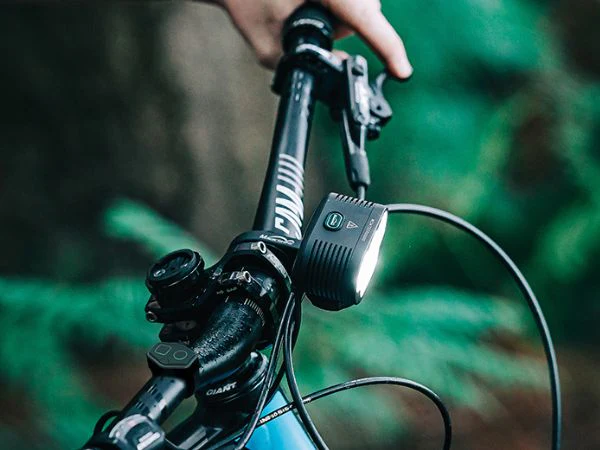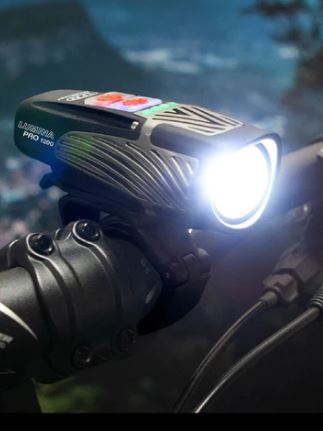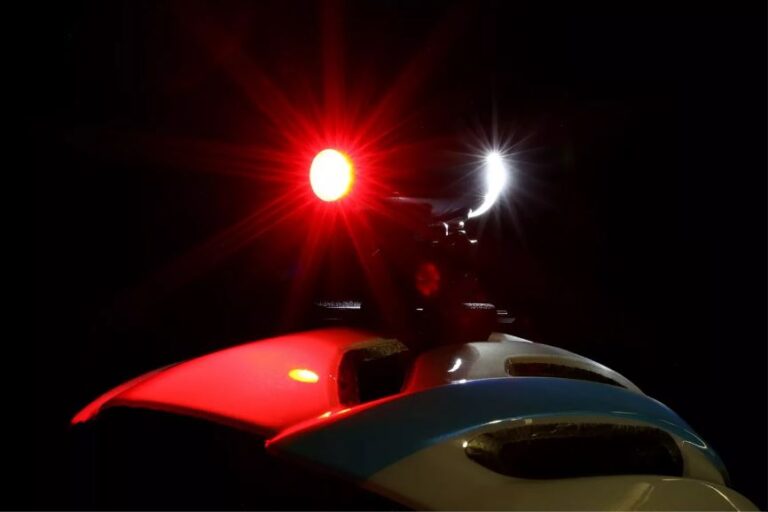Debate on Illumination: Pros and Cons of Flashing vs Steady Bicycle Lights

Key Point Summary of Pros and Cons of Flashing vs Steady Bicycle Lights:
- Visibility and Attention: Flashing lights grab attention more effectively, enhancing visibility.
- Battery Life: Flashing lights tend to have a longer battery life compared to steady lights.
- Rider Location and Speed Perception: Steady lights better help others judge your speed and distance.
- Legal Considerations: The legality of flashing lights can vary by location, making it essential to know local laws.
In my journey as a cyclist, which has taken me from the adrenaline-fueled descents of mountain biking to the strategic sprints of cyclocross and the endurance tests of gravel biking, the topic of optimal lighting has often been a beacon of discussion. Particularly, the choice between using flashing or steady lights has sparked debates within cycling communities. Drawing from this wide array of experiences, I aim to shed light on the pros and cons of each mode, offering guidance to cyclists at the beginner to mid-level stage of their riding journey.
The Flashing Light: A Beacon of Visibility
Flashing lights, whether white for the front or red for the rear, are designed to catch the eye of motorists, pedestrians, and other cyclists. The intermittent burst of light breaks through the monotony of steady urban and rural landscapes, signaling the presence of a cyclist more assertively than a constant beam might. From personal observation, I’ve noticed that when I use flashing lights, especially in the densely populated urban environments or during dusk rides in rural areas, I’m more likely to be noticed by others, reducing close calls with vehicles.
Pros:
- Increased Visibility: The dynamic nature of flashing lights makes them more noticeable, especially in areas with many distractions.
- Extended Battery Life: Flashing modes consume less power, prolonging the time between charges or battery replacements.
Cons:
- Speed and Distance Perception: It can be harder for others to accurately judge your speed and distance when using flashing lights, which might increase the risk of miscalculation in traffic interactions.
- Potential Distraction: To some, particularly in close quarters, flashing lights can be distracting or even disorienting.

The Steady Light: A Constant Companion
Steady lights provide a continuous beam, illuminating the cyclist’s path and making them visible to others. This mode is akin to the headlights of a car, offering a predictable and constant source of light that allows onlookers to better gauge the cyclist’s speed and trajectory. On rural rides under the starlit sky or moonlit paths, the steady beam not only ensures I’m seen by occasional passersby but also lights up the road ahead, allowing for safer navigation through potential hazards.
Pros:
- Predictable Visibility: Steady lights make it easier for others to judge your position, speed, and direction, facilitating safer passing and interactions.
- Illumination of Path: Particularly for front lights, the constant beam helps in illuminating the road or trail ahead, aiding in navigation.
Cons:
- Shorter Battery Life: Emitting a continuous light drains batteries more quickly, necessitating more frequent recharges or replacements.
- Blending In: In certain environments, especially well-lit urban areas, steady lights might blend into the background, making them less noticeable than flashing lights.
Making the Choice: Context is Key
Deciding between flashing and steady lights often comes down to the specific context of your ride. In urban settings with ample ambient light, a flashing rear light can make you stand out from the backdrop of city lights. For those predawn or post-sunset rides in less illuminated areas, a front steady light becomes indispensable for seeing the road ahead, while a flashing rear light maintains visibility to others. It’s not uncommon to use a combination of both, leveraging the advantages of each to enhance safety and visibility across different environments.
Legal and Ethical Considerations
It’s essential to familiarize yourself with local laws regarding bicycle lighting, as regulations regarding flashing lights can vary. Beyond legality, there’s also the matter of courtesy and safety for others; flashing lights, especially very bright ones, can be distracting or uncomfortable for some people, including fellow cyclists and pedestrians.

Final Thoughts
Reflecting on years of cycling across diverse terrains and conditions, I’ve come to appreciate the nuanced benefits of both flashing and steady lights. While my personal anecdotes point to the importance of adaptability—switching between modes based on context, time of day, and environment—the core takeaway is the significance of being well-lit in all your cycling endeavors.
For those seeking a high-quality, versatile lighting solution that accommodates both urban and rural environments, consider the following models:
- Garmin Varia™ RTL515: This rearview radar with tail light is exceptional for cyclists who prioritize safety. It not only provides visible alerts to approaching vehicles from behind but also allows for switching between solid and flashing modes, making it adaptable for different riding conditions. The Garmin Varia™ helps enhance your awareness of cars approaching from behind, up to 153 yards away, and shines brightly both day and night.
- Lezyne Super Drive 1600XXL: This front light is designed for riders needing a powerful beam to illuminate dark rural paths or for those who want to stand out in urban settings. With multiple modes, including a Day Flash mode offering 1600 lumens of peak brightness, it’s built to cater to a cyclist’s need for both steady and flashing light options. Its high-capacity battery ensures long rides are well lit from start to finish.
- Cygolite Metro Pro 1100: A versatile front light that provides exceptional illumination for any road or trail. It offers an impressive 1100 lumens in its highest setting, with steady and flashing modes to adapt to various riding conditions. The long battery life and durable construction make it a reliable choice for cyclists who venture into both urban and rural settings.

Each of these models offers the flexibility to switch between flashing and steady light modes, ensuring cyclists can optimize their visibility according to their specific riding environment and conditions.
FAQ
Which light is better for bikes?
The best light for bikes depends on the riding conditions: a powerful steady light is ideal for illuminating dark paths, while a bright flashing light is excellent for being seen in traffic or well-lit areas.
When should you use flashing lights?
Use flashing lights during the day or in well-lit urban environments to increase visibility and alert others to your presence.
Ride on
John





